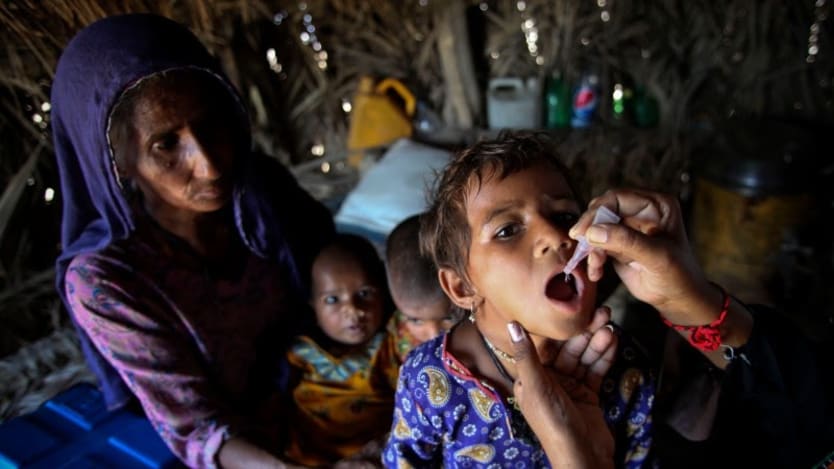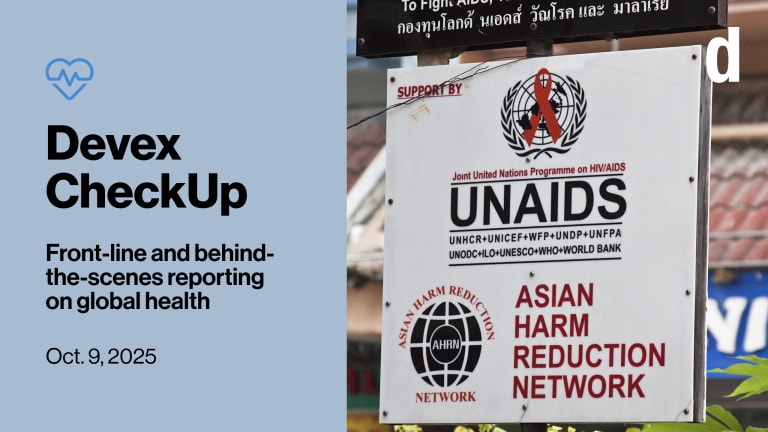
On Aug. 25, the African continent marked four years without a single case of wild polio and was officially certified as wild polio-free. Such a remarkable milestone would not have been possible without strong and consistent United States leadership and global partnerships. With Africa now free of this deadly scourge, the fight against polio has narrowed to Afghanistan and Pakistan, the two remaining countries with wild polio transmission.
The global war on polio is led by the Global Polio Eradication Initiative, which for years has received funding and technical guidance from the Centers for Disease Control and Prevention and the U.S. Agency for International Development. This support has contributed to a drop in polio cases by 99% over the past 30 years — from 350,000 reported cases in 1988 to 176 in 2019.
During that same time, U.S. investments in GPEI have helped avert 18 million cases, saved 1.5 million lives, provided 9 billion doses of oral polio vaccine to children, supported the vaccination of 220 million children multiple times a year, and trained 2 million vaccinators to support polio campaigns.
Failing to eradicate polio now would open the door to a resurgence of this disease, which in 10 years could paralyze up to 200,000 children a year.
—American polio investments have also brought a range of public health benefits to low- and middle-income countries beyond polio eradication. GPEI has built a strong disease surveillance system around the world equipped with labs and trained personnel able to collect, analyze, and disseminate information about infectious diseases. GPEI has also trained health workers in a bid to close one of the largest gaps in Africa’s health care system.
In addition, GPEI has reached remote, marginalized, and conflict-ridden communities that were previously inaccessible, training thousands of social mobilizers — mostly women — from within those communities to use their position of trust to increase vaccine acceptance. GPEI has detected and responded to other outbreaks on the continent, stopping diseases such as cholera, measles, and meningitis at the original source.
How the eradication of wild poliovirus from Africa can guide the COVID-19 response
Networks, expertise, and infrastructure built around polio campaigns have contributed to a stronger public health system across Africa and are currently being used to tackle the pandemic.
Most notably this year, the polio program has yielded enormous benefits in the global fight against COVID-19. The global disease surveillance network built by the polio program is now being utilized to detect coronavirus cases, provide lab testing, and streamline data management and information sharing.
GPEI’s emergency operations centers are helping governments coordinate public health responses. GPEI has also sent thousands of staff around the world to provide education about the virus, conduct contact tracing, and train new health workers.
Shifting GPEI resources was critical in helping many countries respond to the pandemic, but it has come at a cost to polio eradication efforts. Polio vaccination campaigns were put on pause in March 2020, and roughly 50 million children in Afghanistan and Pakistan alone did not receive polio vaccines. The suspended campaigns have meant polio cases have returned to districts in these countries that were previously polio-free.
In August, GPEI was able to resume vaccination campaigns, but the program now faces a daunting challenge. In Pakistan, GPEI initially reached 780,000 children under the age of 5 who live in the country’s most at-risk districts. However, even with nationwide campaigns scheduled, UNICEF estimates that up to 1 million children in Afghanistan could miss out in cases where door-to-door vaccination is not possible.
If these children are not reached with vaccines, GPEI risks jeopardizing 30 years of progress against polio. Failing to eradicate polio now would open the door to a resurgence of this disease, which in 10 years could paralyze up to 200,000 children a year.
As a result of consistent U.S. investments over the last 30 years, we are closer than ever before to eradicating polio from the face of the earth. Such a milestone would be only the second time in history that we have completely wiped out a human disease, after smallpox eradication. Now is not the time to drop the ball.
This year, as in past years, I led the effort with Senator Reed, D-R.I., to secure $237 million in U.S. funding to strengthen polio eradication efforts. Based on the previous year’s appropriations, I am optimistic about a positive outcome in fiscal year 2021.
A strong, well-funded GPEI is essential to winning the fight against polio and maintaining strong health systems that benefit people around the world.
To find out more about the Global Polio Eradication Initiative and its work to respond to polio and other disease threats, visit polioeradication.org.








